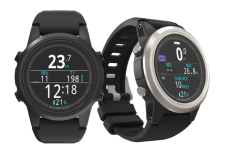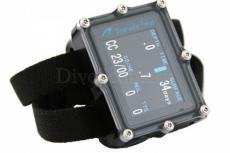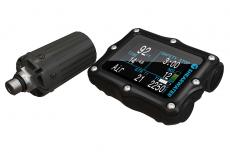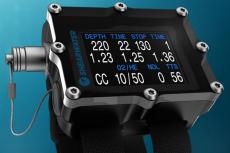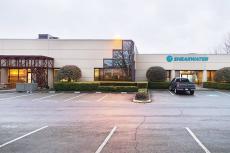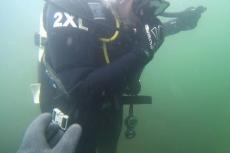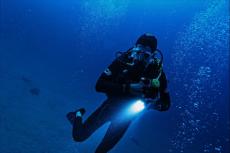Shearwater Perdix
Did you know Perdix perdix is the Latin name for the Grey Partridge? Me neither.
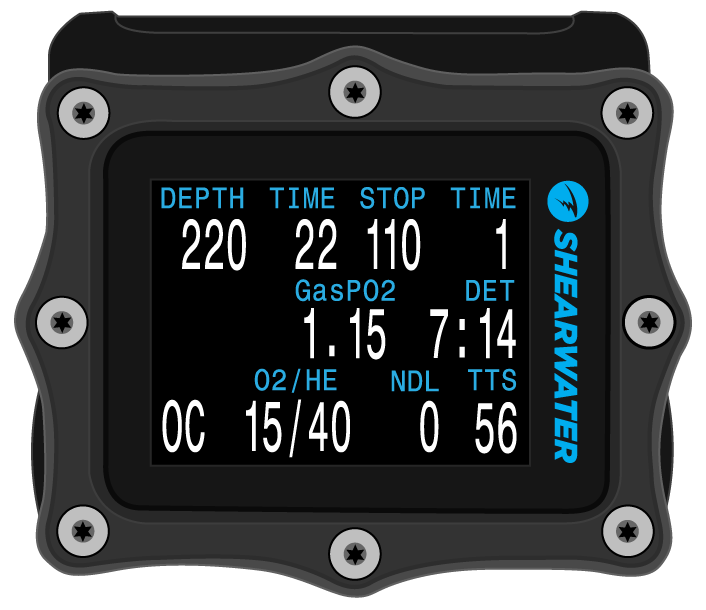
Why do I mention this odd ornithological fact? Actually it is not a random comment. The family name of owners of Shearwater Research is 'Partridge'. Shearwater Research decided to mark the start of the new year by launching their latest baby. A new dive computer, aptly called the 'Perdix'. (Love the thinking behind the name!)
Walt Stearns of the Underwater Journal did a pretty thorough job of reviewing the Perdix. So let's have a quick down and dirty look at this dive computer. The Perdix is sleeker than previous Shearwater models. It is 30% smaller in volume than the Petrel because of a new manufacturing process. Traditionally, Shearwater would mill their computer housings from a block of Delrin. With the Perdix they have employed an injection moulding process using a special nylon resin reinforced with glass fiber.
The result is a light, strong case that is ergonomically shaped to snuggly fit on the arm. It should also make donning and doffing equipment easier, as the diver will be less likely to snag / hook themselves on their computer whilst wriggling into a harness or rebreather. One tradition I am pleased to see carried over from the Petrel is the user changeable battery.
A couple of years ago I was kindly lent a Shearwater Predator to dive Poor Knights in New Zealand. All went well until the battery went flat on a dive. I subsequently wasted a lot of time scouring Tutukaka for a replacement battery. As Oscar Wilde might have observed in 'The Importance of Being Earnest', "there were no 3.6 volt batteries in the market this morning... not even for ready money".
Bruce Partridge, CEO of Shearwater Research, acknowledges the fact that divers want hassle-free diving wherever they travel to across the globe. Two things will be pretty constant for the travelling diver. The ability to get our hands on a standard AA battery, and we will most likely have some kind of change in a pocket. (Coin)cidentally, the groove on the battery compartment can be opened by various coins and the battery changed by the diver in seconds.
[video:https://www.youtube.com/watch?v=D13NkKj9G_M]
The Perdix also benefits from the intuitive two-button menu system and has four modes. Open-circuit recreational, open-circuit technical, closed-circuit fixed PO2, and gauge mode. Shearwater Research has continued with the tradition of using the Buhlmann ZHL-16C as the primary decompression algorithm.
You have the option of adding the VPM-B algorithm if you wish. The ability to change gradient factors has not been forgotten, allowing you to manipulate the conservatism settings on your Perdix. Gradient factors allow the diver to control the ascent profile of decompression dives, effectively adjusting stop depth and stop duration.
The factory standard gradient factor on the Perdix - 30/70 - isn't some random number picked from the air. It is based on real dive research. Since 2009, environmental physiologist Dr Neal W Pollock has been monitoring decompression stress in technical divers. (Shearwater computers previously used a default gradient factor setting of 30 / 85.
As a direct result of Dr Pollock's research they now all come with a GF of 30 / 70). This more conservative GF was associated with reduced bubble grades evident in the study trials. The Perdix also benefits from a three-axis, tilt-compensating, digital compass. The high resolution LCD display will provide the diver with a digital heading whilst continuing to display depth, time, decompression, and PO2 data.
For more information visit: shearwater.com/products/perdix
- Log in to post comments


